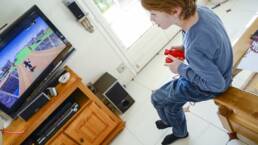How to treat a Herniated Disc
Between each of our spinal vertebrae we have an intervertebral disc. These discs play an important role in the normal functioning of our spines. They act as shock absorbers, hold the vertebrae together and allow slight movement of the spine.
Every disc has a tough outer ring called the annulus fibrosus which acts to protect the gel-like substance inside each disc, otherwise known as the nucleus pulposus. Disc herniation occurs when the annulus fibrosus tears and allows the nucleus pulposus to escape. If a herniated disc presses onto the spinal cord or spinal nerves, it can cause pain and other nerve related symptoms.
CAUSES
- Poor lifting techniques (bending forward with your low back, twisting)
- Repetitive activities (lifting, bending, twisting)
- Poor posture
- Sedentary lifestyle (i.e sitting for long periods)
- Age related wear and tear (disc degeneration)
- Obesity
SYMPTOMS
The location of pain & other symptoms may vary depending on the location of the disc disruption and stage:
- Neck &/or back pain
- Burning, numbness, tingling in the neck, arms, hands, back, buttocks, legs or feet
- Muscle spasm or cramping
- Sciatica
- Arm or leg weakness
- Increased pain with sneezing, coughing or bending forward
| Stage | Description |
| Disc Degeneration | Discs weaken in response to chemical changes. No herniation occurs. |
|
Disc Prolapse “bulging/protruding” |
Inner gel-like material pushes further into outer layer of disc and may cause some impingement into the spinal canal &/or nerves. |
| Disc Extrusion | Gel-like material breaks through outer layer of wall but remains within the disc. |
| Disc Sequestration | Gel-like material breaks through outer layer of wall and goes beyond disc into the spinal canal, causing nerve pain & inflammation. |
DIAGNOSIS
Thorough medical history and physical exam obtained by a health care professional. In some cases X-rays, MRI and/or CT scans may be required to confirm the diagnosis and stage of disc herniation.
TREATMENT
Conservative care is normally the first protocol for the treatment of disc herniations. This may include stretching, active strengthening exercises, massage and ice and heat pack therapy. Other physical therapies such as Chiropractic care have also been deemed effective in improving clinical outcomes (Leeman et al, 2014) (Jordon J, 2009).
RESOUCES
Jordon J, Konstantinou K, O’Dowd J. Herniated lumbar disc. (2009). BMJ Clin Evid, 2009, 1118.
Leeman S, Peterson CK, Schmid C, Anklin B, Humphreys K. Outcomes of acute and chronic patients with magnetic resonance imaging-confirmed symptomatic lumbar disc herniation receiving high-velocity, low-amplitude spinal manipulation therapy: a prospective observational cohort study with one-year follow-up. (2014). Journal of Manipulative and Physiologic Therapeutics, 37(3), 155-163. doi: 10.1016/j.jmpt.2013.12.011
Rodine RJ, Vernon H. Cervical radiculopathy: a systematic review on treatment by spinal manipulation and measurement with the Neck Disability Index. 2012. J Can Chiropr Assoc, 56(1), 18-28.


